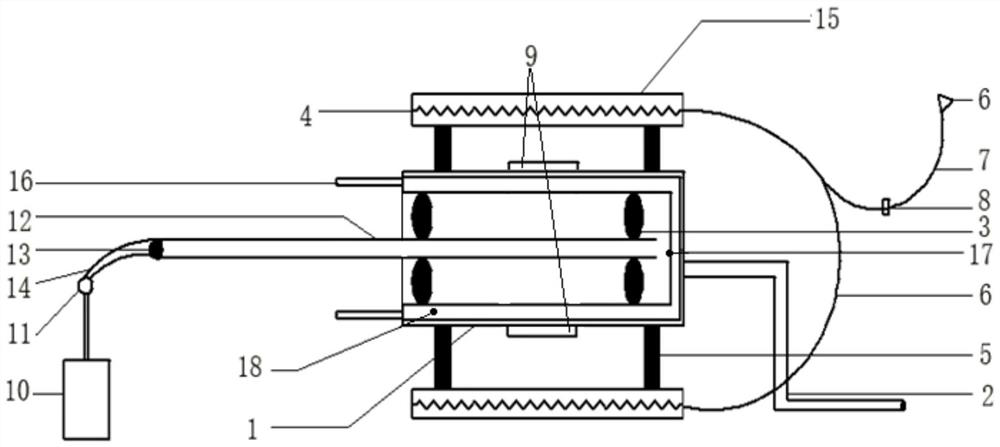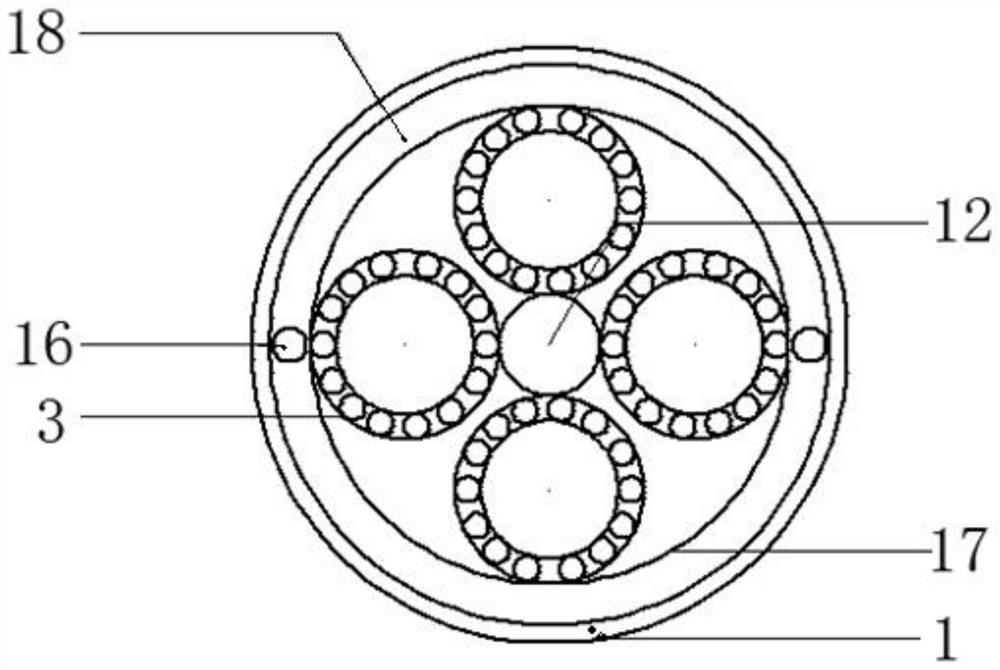An indoor volatile organic compound removal device based on thermal desorption and cold extraction
A volatile organic compound extraction technology, applied in the field of indoor environmental purification, can solve the problems of short aldehyde removal time, damage, no longer having adsorption capacity, etc., and achieve simple operation, cost saving, and obvious effect of removing formaldehyde
- Summary
- Abstract
- Description
- Claims
- Application Information
AI Technical Summary
Problems solved by technology
Method used
Image
Examples
Embodiment Construction
[0042] The present invention will be further described below in conjunction with specific examples.
[0043] like figure 1 , figure 2 As shown, an indoor volatile organic compound removal device based on thermal desorption and cold extraction, including a drum support unit, a thermal desorption unit, a cooling extraction unit, and a nano-adsorption degradation unit;
[0044] The drum support unit is used to load the solid phase extraction coating, control the rotation of the drum, and enhance the adsorption;
[0045]The thermal desorption unit, including the heating rod 4, provides a heat source for heating the sample and promotes the extraction of volatile organic pollutants;
[0046] The cooling extraction unit includes a liquid carbon dioxide steel cylinder 10, which is used to provide liquid carbon dioxide to absorb heat to create a low-temperature environment, and form a temperature gradient with the heat source provided by the heating rod 4, which is beneficial to the...
PUM
 Login to View More
Login to View More Abstract
Description
Claims
Application Information
 Login to View More
Login to View More - R&D
- Intellectual Property
- Life Sciences
- Materials
- Tech Scout
- Unparalleled Data Quality
- Higher Quality Content
- 60% Fewer Hallucinations
Browse by: Latest US Patents, China's latest patents, Technical Efficacy Thesaurus, Application Domain, Technology Topic, Popular Technical Reports.
© 2025 PatSnap. All rights reserved.Legal|Privacy policy|Modern Slavery Act Transparency Statement|Sitemap|About US| Contact US: help@patsnap.com


